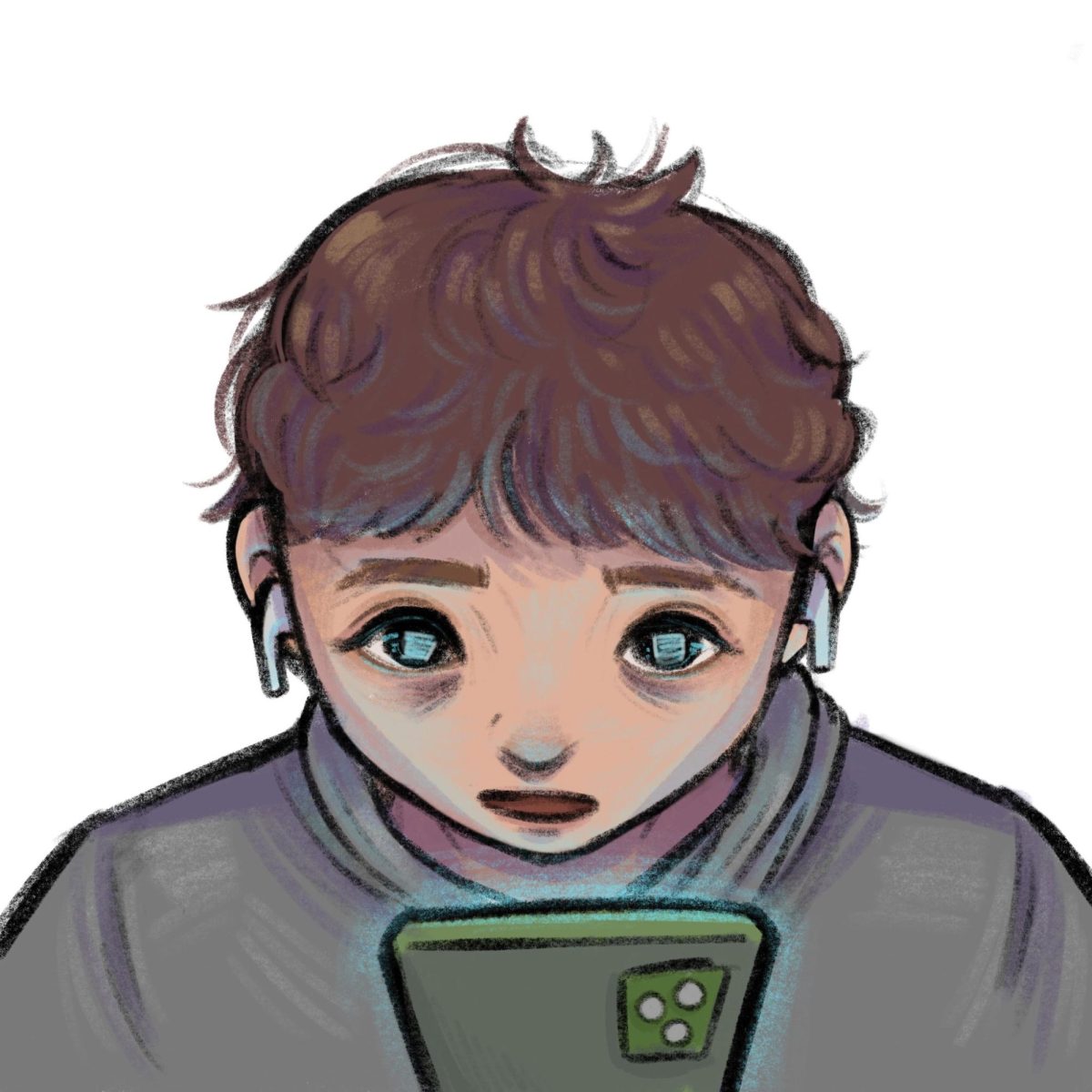A Harmless Evolution of Youth Culture
By. Matthew K. ’28
“What the skibidi sigma?”
I’m sure we’ve all heard this once before. In fact, I bet anyone reading this either cringed or laughed. This set of running jokes, terms, and memes, often labeled as “brainrot,” has become a staple in the lexicon of today’s youth. What that really means, both for us and for society, is sort-of up for grabs.
First, let’s address the elephant in the room. The term “brainrot” has undeniably negative connotations, and to some experts, it would conjure images of cognitive decline and diminished intellectual capacity. But is that really the whole picture? Do we want to fix our understanding of a trend in our youth with a definition by experts decades older and wiser than them?
The answer is no. It’s crucial to remember that “brainrot,” as used and defined by teenagers, is not about cognitive decline at all. Rather, it’s a term we use to describe the quirky, sometimes nonsensical slang and memes that dominate our social interactions. While doomscrolling and social media addiction are genuine concerns, which I frankly believe are the most detrimental ailments to adolescent health, equating all forms of youth culture with these issues is a gross oversimplification.
Humor, including the kind found in brainrot, serves a valuable purpose in our lives. Laughter has been scientifically proven to improve cardiovascular health, relieve stress, enhance mood, and even strengthen the immune system. When we toss around phrases like “it’s giving” or “he’s him,” we’re not just parroting meaningless words (that somehow contribute to our cognitive decline) — we’re participating in a shared cultural experience that brings joy and a sense of community.
In order to understand how these forms of communication reflect broader cultural and social issues, we have to take a step back just one generation. Parts of Gen Z slang are inspired by African-American Vernacular English (AAVE), a dialect of English largely spoken by working and middle-class African Americans. AAVE has influenced much of our mainstream vocabulary with words like “bruh,” “cap,” and “bussin’.” Originally used as a coping mechanism during the early days of British colonization in America as far back as the 17th century, AAVE evolved into a powerful way to preserve the African-American community, especially during times of civil unrest and suffering.
Despite its long and storied history, AAVE continues to suffer from stigmatization and is sometimes not recognized as a “standard dialect” of American English. Older generations often frowned upon the use of AAVE, including the words that Gen-Z slang has borrowed from it. Yet, these terms have become an integral part of youth language today, and this just goes to show how much a language can evolve and how new generations can reclaim and reshape it.
Brainrot is no different — it’s just another evolution of youth culture, now emerging with Generation Alpha. Many of the terms used by Gen-Alpha are phrases continually repeated across social media platforms, where younger people have the most exposure — and where “grown-ups” frown upon the most. If we also note how social media is seen as an illegitimate means of communicating with others, we can draw several parallels between Gen-Z and Gen-Alpha slang.
This isn’t a new phenomenon just for those two generations either: it’s a tradition as old as language itself. Think back to the 1960s with “groovy” or the 1990s with “rad.” Each generation has its own version of brainrot, and each one survived it just fine.
Not only can slang (or brainrot, for that matter) develop community and identity, but it can foster creativity and linguistic innovation. The playful manipulation of language encourages quick thinking, adaptability, and the ability to navigate complex social dynamics. Not only that, certain phrases can actually serve as shorthand for more complex ideas, such as identity, self-expression, or commentary. The humor and seemingly lighthearted nature of these terms can make it easier to discuss or acknowledge these issues without the conversation feeling heavy or serious.
Yes, there are risks associated with excessive screen time and social media use, but the solution isn’t to demonize the cultural expressions of an entire generation. Instead, let’s focus on fostering a balanced approach to technology use, one that allows us to enjoy the benefits of digital culture while maintaining our mental and physical well-being.
Again, language evolves. What was once considered nonsensical or “lowbrow” can eventually make its way into the mainstream. The flexibility of brainrot vocabulary, its capacity to capture complex emotions in a few words or a short phrase, is actually a testament to the evolving nature of communication in the digital age.
So I have just one last thing to say: Stay skibidi, Lakesiders.
A Danger to Ourselves and to Society
By. Oliver T. ‘28
“Chat, what is this?”
The answer is brain rot. Brainrot has plagued the minds of teenagers all around the country, and has led to a notable decrease in earnesty and intelligence across the board.
Brainrot is essentially a state of cognitive overload and inability to focus. To quote the Ebbtide, Shoreline Community College’s independent newspaper, “Students are constantly bombarded with short, engaging content that provides immediate gratification but lacks intellectual depth.” This constant flooding of information into our brains decreases the speed at which we can process things and takes up a lot of mental space that could be used for more productive activities.
Moreover, the formulaic nature of brainrot slang discourages students from thinking for themselves and having thoughtful discussions, because with the introduction of brainrot vocabulary, students can interject a conversation with some random adapted brainrot slang, often targeted at a specific person. This discredits people’s contributions, immediately stops a discussion from continuing, and stifles critical thinking and debate. In linguistics, this is known as a thought-terminating cliché.
The term brainrot, however, is older than you might think — it was first coined in 2007 and since then the term has been linked to everything from Generation Alpha slang to a medical condition titled “Problematic Interactive Media Use” — aka doomscrolling.
Walking across campus, the use of brainrot is inescapable, to say the least. “It’s giving screen-ager,” “he’s him,” “what the sigma,” the list goes on. What’s more, brainrot only serves to distract students from their schoolwork, and sounds pretty immature to boot. After all, there is a reason why it’s called “brain rot.” The name implies that the use of brain-rot language will literally cause your brain to “rot,” which has actually been proven true.
Multiple sources, such as the Newport Institute and the Boston Children’s Hospital, have found that excessive use of technology and slang has numerous negative effects on your brain, including but not limited to: mental fogginess, difficulty with organizing information, problem-solving, making decisions, and staying focused. It’s pretty clear that brainrot negatively affects students’ performance at school as well as their intelligence in general.
Moreover, brainrot has the potential to drastically influence the future careers and work lives of students. The lasting impacts of a shorter attention span, difficulties with problem solving, and overstimulation have seeped their way into our lives, and will continue to be issues long after students finish their education.
The creation of TikTok and the increase in popularity of these trends across multiple social media platforms have affected how we live and go about our everyday lives. For example, many of the habits that we’ve developed such as constantly scrolling and being glued to our phones in general have stemmed from these trends as they evolve in variety and popularity. Dr. Julia Kogan explains, “[the main sign of having brainrot] is when your online time starts to interfere with activities of daily living…other signs may be the difficulty separating from your phone and the need to constantly check for notifications.” The results include less uninterrupted quality time with family and friends, a reduction in genuine day-to-day interactions with our peers, and trouble sleeping.
This could then spillover into society as a whole, as the effects of brainrot begin to manifest themselves on a larger scale, causing overall productivity rates to drop, as well as the aforementioned decrease in genuine human interactions.
Finally, brainrot’s fast-paced nature can be hard to keep up with, and can lead to some feeling excluded from conversations and inside jokes if they don’t know what something means. An effort to keep up with all the trends will also drain students’ time and energy, preventing them from reaching their full potential.
Lakesiders, let’s put an end to brainrot before our last brain cells expire.




